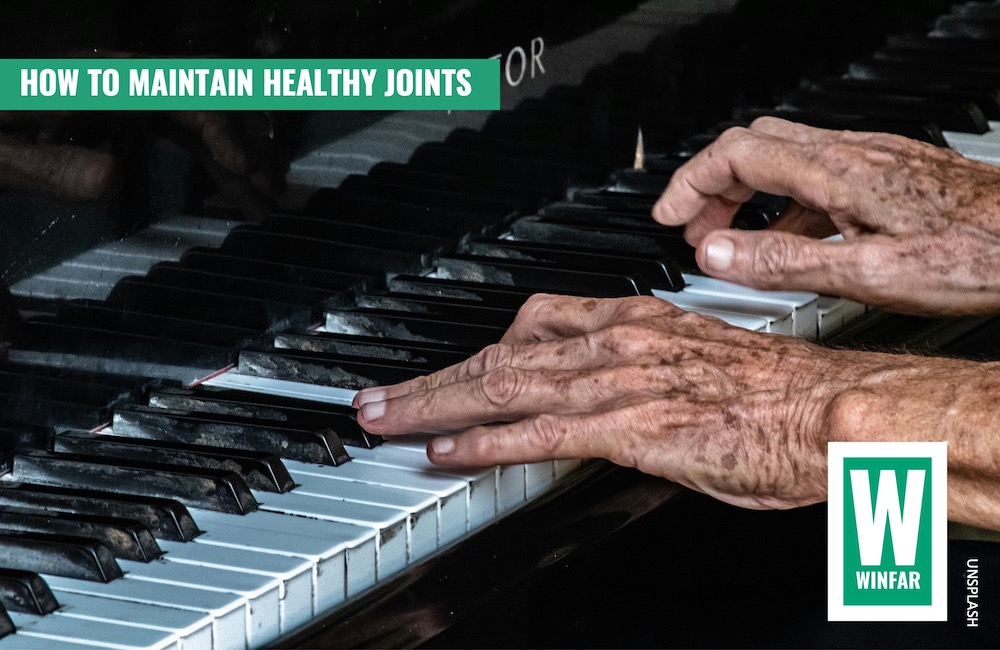Joint pain is a common complaint—whether it affects your knees, hands, hips, or ankles—but much of it is preventable. Recognizing and adjusting certain behaviours can go a long way toward keeping your joints healthy for the long term.
You don’t need a complete lifestyle overhaul to protect your joints. With just a little extra care and attention, you can prevent joint pain and improve your comfort and mobility. Often, it’s the small, everyday habits that make the biggest difference. A little effort goes a long way in relieving and preventing joint pain, maintaining healthy joints, and making your life more comfortable and active.
Let’s take a look at the habits that could be causing damage. Everyday habits to break that harm your joints
Start by identifying one or two habits below that might apply to you. Even gradual improvements can lead to noticeable benefits over time.
1. Sitting Too Long
Spending hours sitting—whether at a desk or on the couch—can promote poor posture and stiff joints. Over time, it can even impact your spine.
To combat this:
– Stand up and move every 30–60 minutes.
– When sitting, keep your back straight, shoulders relaxed, and feet flat on the floor.
2. Slouching or Poor Posture
Posture matters whether you’re sitting, standing, or walking. Misalignment places strain on your joints, especially in the spine, hips, and knees.
– When walking, stand tall with shoulders back and knees aligned.
– Use lumbar support or seat cushions if you’re seated for extended periods.
3. Every excercise counts
Muscle strength helps protect joints and slow age-related bone loss. Even simple exercises can make a big impact.
Related reading: Yes, you can achieve an effective workout without leaving your chair
– Incorporate strength training a few times a week.
– If mobility is limited, try chair-based resistance or strength exercises.
4. Eat a Balanced Diet
Focus on foods rich in calcium, vitamin D, vitamin C, and omega-3 fatty acids.
Great sources include lean meats, fatty fish (like salmon), dairy, beans, legumes, and nuts.
Limit processed foods and excess sugar, which can increase inflammation.
If you suspect you’re not getting enough nutrients, consult your doctor about supplements.
Related reading: Are you getting enough Vitamin D?
And Stay hydrated – Water keeps your joints lubricated and functioning smoothly.
5. Carrying Extra Weight
Being overweight increases pressure on weight-bearing joints like the knees, hips, and ankles, accelerating wear and tear.
Again, small changes can lead to lasting results:
6. Not Getting Enough Sleep
Sleep is when your body repairs itself. Poor sleep or lack of sleep can trigger inflammatory reactions in the body, leading to conditions like psoriatic arthritis. Ensure you get enough sleep to avoid this cycle of pain.
– Aim for 7–9 hours of quality sleep per night.
– Improve sleep hygiene by setting a bedtime routine and limiting screen time.
Related reading: Sleeping positions that reduce pain and discomfort.
Navigating sleep challenges in seniors
7. Sleeping on Your Stomach
Sleeping on your stomach is the worst position for spine health as it forces you to twist your neck and puts pressure on your vertebrae.
Sleeping on your back or sides is better. If that’s uncomfortable, use positioning pillows to maintain proper alignment and reduce pressure.
Related reading: Sleeping positions that reduce pain and discomfort.
8. Wearing the Wrong Shoes
Wearing shoes without proper arch support or ill-fitting shoes can lead to joint pain in your feet and ankles.
Shoes can force your feet into awkward positions, affecting your knees and hips as well.
Choose supportive, well-fitted shoes with good arch support, that offer full support and proper weight distribution.
If you experience pain in your feet, consider using insoles. Insoles can improve alignment and reduce strain on joints.
9. Smoking
Nicotine reduces blood flow, decreases calcium absorption, and slows new bone formation, all of which are detrimental to joint health. Quitting smoking can significantly improve your bone and joint health.
10. Ignoring Joint Pain
Persistent pain is your body’s way of signaling something’s wrong. Don’t ignore it.
Use RICE as a first step – Rest, Ice, Compression, Elevation – to manage discomfort.
If pain lasts more than a few days, consult your doctor to prevent long-term damage.
You don’t have to live with discomfort. In addition to avoiding harmful habits, you can take proactive steps to improve your joint health:
These tools can provide relief while supporting long-term joint health:
– Pain creams – Offer fast, targeted relief to manage joint pain on the spot.
– Ice & heating packs – a simple solutions that can reduce short-term pain and promote healing.
– Supportive insoles – the perfect way to ensure you get the support you need while walking or running.
They ease existing joint pain while promoting a healthy gait.
– Compression wear – After consultation with your doctor, consider using compression glove or sock to reduce pain and stabilise joints.
Related reading: What you need to know about compression socks.
Final Thoughts
Protecting your joints doesn’t require drastic change. By being mindful of your habits, making small adjustments, and supporting your body with the right tools and nutrition, you can stay mobile, active, and pain-free longer.

